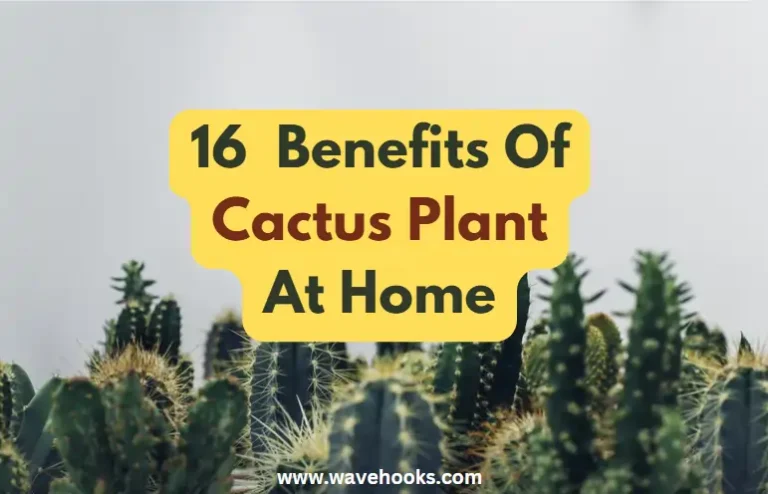Have you ever watched your indoor plants struggling when the sunlight starts disappearing?
Their leaves droop, colors fade, and they appear to lose life, no matter how much nutrients you offer for repotting.
It’s a common struggle for every plant lover when fall and winter roll in. The problem isn’t you, it’s the lack of light.
You can easily fix it by learning how to use grow lights for indoor plants. It’s like bringing a piece of summer back inside your home.
With a few simple steps, you can keep your plants green and watch them grow strong all year round, even when it’s dark and cold outside.
Why Seasonal Light Matters More Than You Think

When autumn arrives, daylight slips away, and your plants quietly begin to struggle. Less sunlight means less photosynthesis, which is their main energy source.
Many common houseplants, like pothos and monstera, need 12–16 hours of bright light daily to maintain lush growth.
In fall and winter, most homes only get half of that. It leads to slower growth, pale leaves, and early leaf drop.
Understanding how to use grow lights for indoor plants helps you fill that seasonal gap with the perfect balance of brightness and warmth.
The right artificial light keeps your plants thriving, even when the world outside turns gray and cold.
Understanding the Science Behind Grow Lights
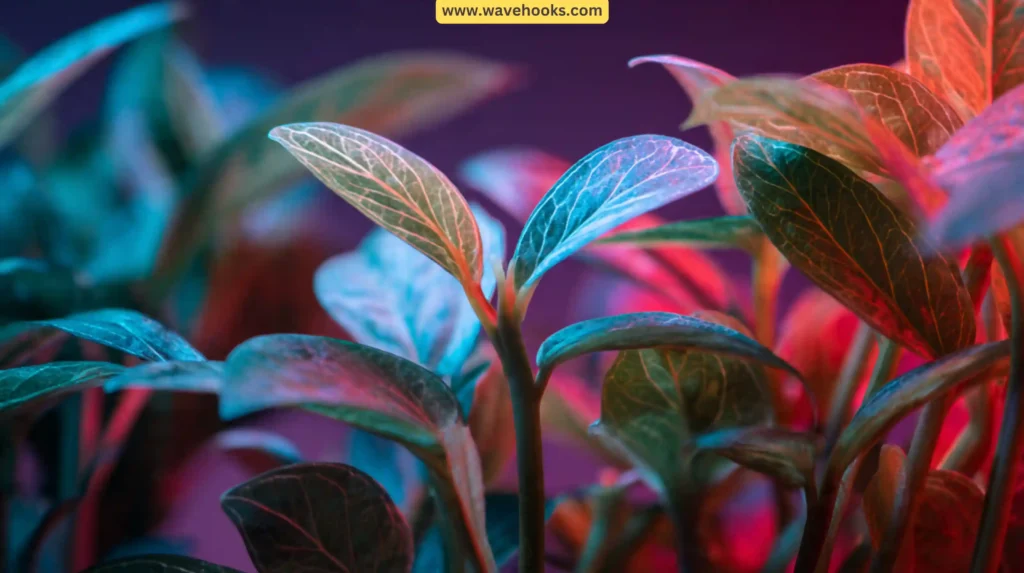
Light isn’t just brightness. It’s a language that plants understand. Every wavelength sends a different message.
Blue tells them to grow leaves, and red tells them to bloom. When you understand how to use grow lights for indoor plants, you’re learning to speak that language.
During fall and winter, sunlight weakens, and indoor windows filter out essential spectrums.
That’s why even a sunny window with natural sunlight can leave plants struggling.
Grow lights fill this gap by offering full-spectrum brightness that simulates natural daylight, allowing plants to continue photosynthesizing efficiently.
The trick lies in intensity, duration, and distance, the three pillars of artificial lighting. Balancing correctly makes your plants think it’s June even in January.
Also Check: 15 Stunning Big Indoor Plants That Don’t Need Sunlight!
How to choose the right grow lights for indoor plants
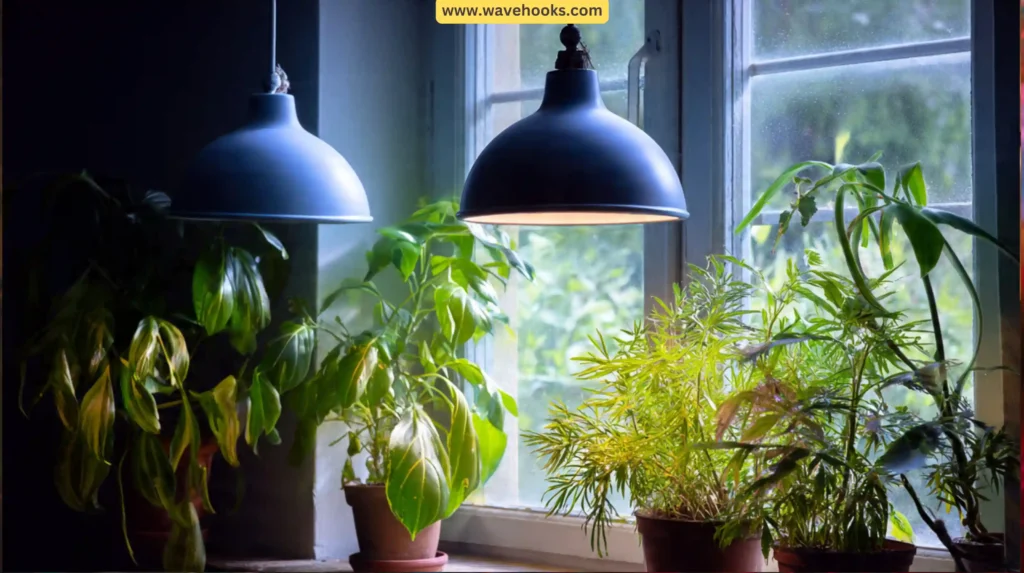
Here are some key features to look for when you use grow lights for indoor plants:
When you decide to use grow lights for indoor plants, focus on three key factors: spectrum (light color), intensity, distance, and duration.
Spectrum: Choose a full-spectrum or red and blue combination. Blue light encourages foliage, red helps flowering and fruiting.
Intensity & distance: The closer the light to the plant, the greater the effect.
Duration: Most indoor houseplants need 8-14 hours of light when supplementing natural light. Seedlings or fruiting plants often need 14-16 hours.
Also Read: 20 Poisonous Plants Common In USA You Must Never Touch!
Seasonal tip for fall-to-winter transition
As the season changes from autumn to winter, your indoor plants receive less natural light.
To compensate, increase usage gradually. Start by placing light on for 10 hours a day and inch up to 12-14 hours as daylight fades. This keeps your greens on track.
Placement & safety when you use grow lights for indoor plants

Keep the grow light about 10-30 cm (4-12 inches) above foliage, depending on intensity.
For LED full-spectrum lights, 15-30 cm is often fine. One test measured 500-800fc at 4 feet away for typical houseplants.
Also, ensure good air flow around the fixture to avoid excess heat. And always stick to the manufacturer’s instructions.
Best Types of Grow Lights for Indoor Plants
Choosing the right light makes all the difference.
Here are some types every indoor gardener should know before learning how to use grow lights for indoor plants effectively.
1. LED Grow Lights

LEDs are the most popular choice when mastering how to use grow lights for indoor plants. They use up to 75% less energy than fluorescent bulbs and last over 50,000 hours. Full-spectrum LEDs simulate natural sunlight perfectly, making them ideal for all plant stages. They stay cool, so you won’t scorch delicate leaves or waste electricity.
2. Fluorescent Grow Lights

If you’re new to how to use grow lights for indoor plants, fluorescent bulbs like T5 or CFL are budget-friendly and easy to set up. They’re great for herbs, lettuce, and seedlings. Fluorescents emit soft, even light that encourages compact growth. Studies show plants under T5s grow 30% faster than window-only lighting, great for small apartments or desks.
Also Check: 15 Stunning Big Indoor Plants That Don’t Need Sunlight!
3. HID (High-Intensity Discharge) Lights
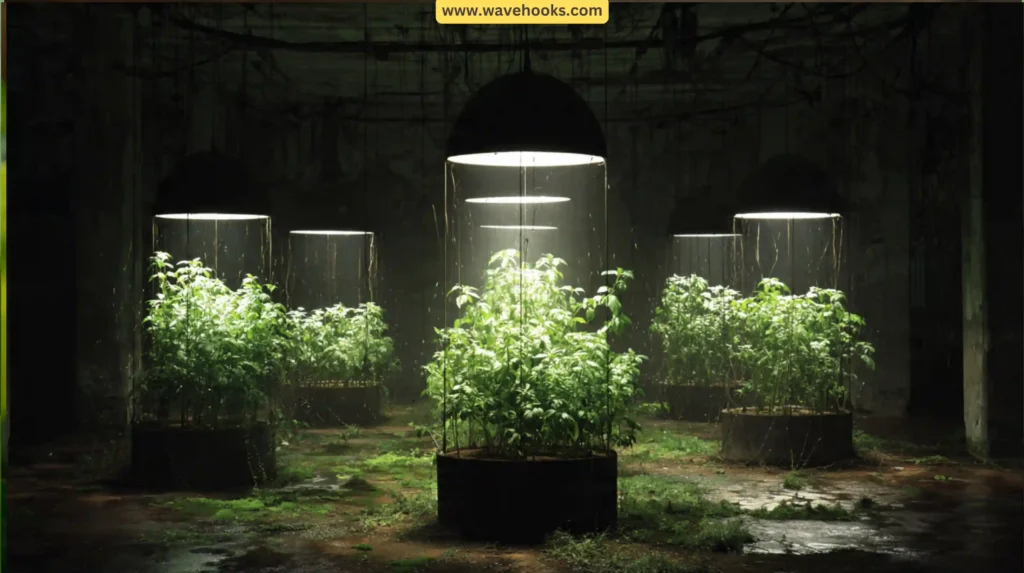
When learning how to use grow lights for indoor plants at scale, HID systems, Metal Halide (MH), and High-Pressure Sodium (HPS) deliver serious brightness. MH bulbs support leafy growth, while HPS enhances flowering. They’re strong enough for indoor fruiting plants like tomatoes or citrus. However, they generate heat and use fans or reflectors to balance temperature safely.
4. Full-Spectrum Grow Lights
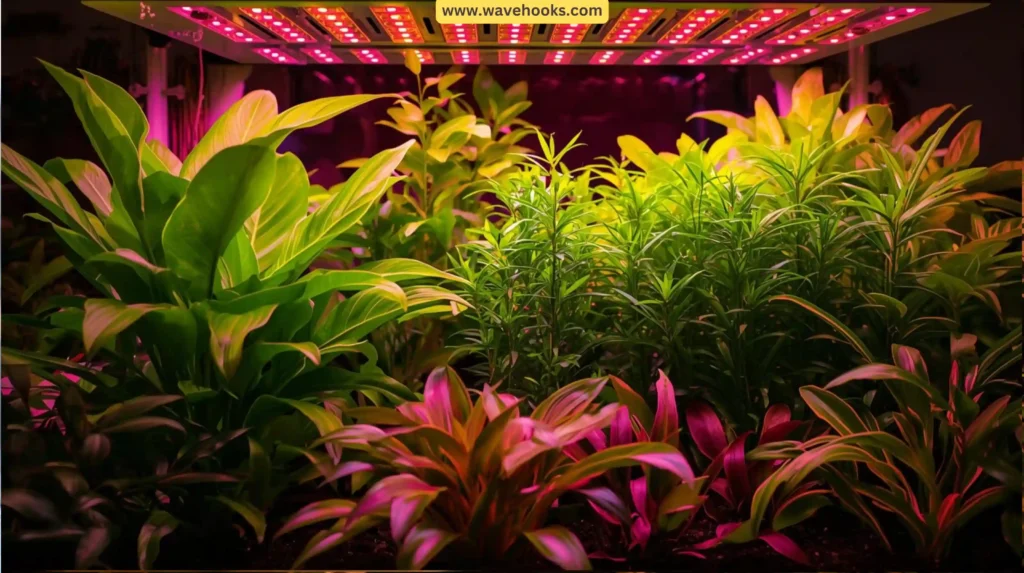
Full-spectrum lamps are essential once you understand how to use grow lights for indoor plants year-round. They combine red, blue, and white wavelengths to imitate real sunlight. This balance encourages both photosynthesis and bloom. A Cornell University study found that full-spectrum lighting improves indoor foliage density by 35% ideal for mixed collections like pothos, herbs, and flowering vines.
5. Incandescent Grow Lights

Although less efficient, incandescent bulbs still play a role in how to use grow lights for indoor plants in decorative corners. They provide gentle warmth, useful for tropicals or succulents needing minimal light. Use them sparingly since they emit more heat than light. Pairing them with cooler LEDs ensures your indoor plants get balanced illumination and style.
6. Halogen Grow Lights
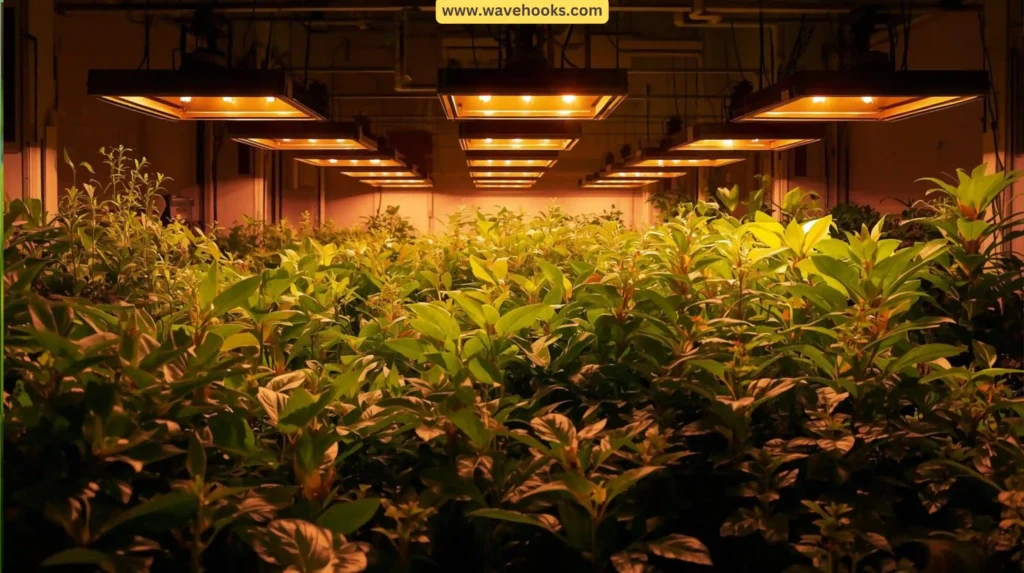
Halogen bulbs emit intense, directional light, ideal for spotlighting plants. If you’re experimenting with how to use grow lights for indoor plants in reading nooks or display shelves, halogens work beautifully. They highlight color and texture while adding aesthetic warmth. Keep them at least 14 inches away to avoid heat stress, and limit runtime to 8–10 hours daily.
Also Read: 30 Best Plants To Keep In A Bathroom Without A Window Care!
Tricks for How to Use Grow Lights for Indoor Plants
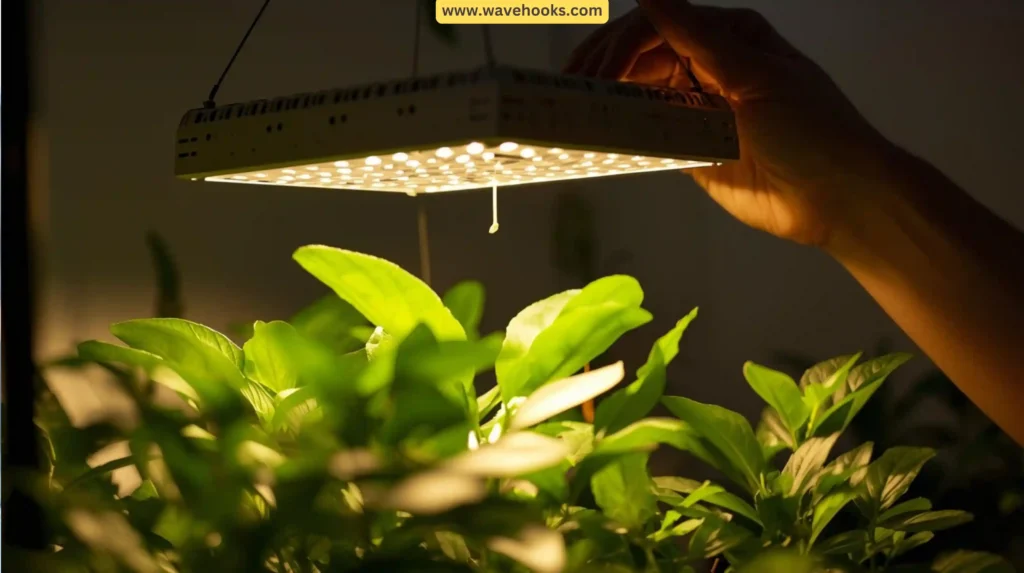
Here are some simple tricks to follow:
1. Set the Right Distance
When learning how to use grow lights for indoor plants, distance makes or breaks success. Keep LED grow lights 6–12 inches above small plants, 12–24 inches for larger ones. Too close burns leaves or too far causes stretching. Adjust weekly as plants grow, especially in winter when they’re light-hungry. Test with your palm if it’s too hot for your hand, it’s too hot for your plant.
2. Time It Right
Plants love rhythm. Use a timer to simulate sunrise and sunset. Beginners often overlook timing when figuring out how to use grow lights for indoor plants. Most species need 14–16 hours of artificial light daily in fall or winter. Consistency prevents stress and drooping. Smart timers or plug-in switches keep things automatic so you never forget to turn on the sun.
3. Match Light Type to Plant Type
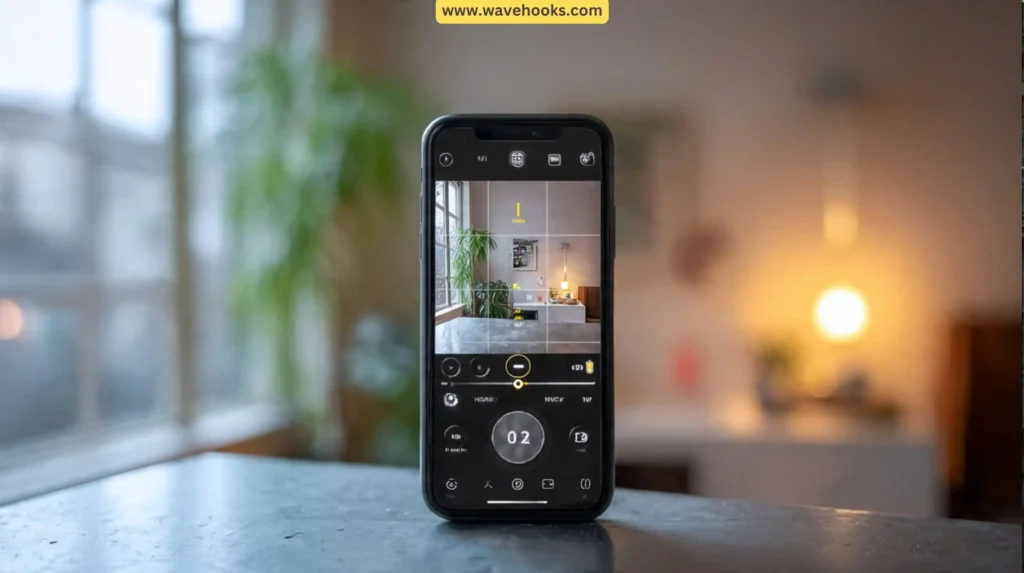
Not every grow light fits every leaf. The trick is pairing the right spectrum, like herbs and succulents love bright full-spectrum LEDs, while flowering plants benefit from more red light. Avoid cool-white household bulbs as they miss the balanced wavelengths. Use daylight grow bulbs rated 5000–6500K for the healthiest indoor ecosystem.
Also Read: 20 Easy Plants For Apartment Balcony You’ll Actually Love!
4. Rotate Plants Weekly
If you want balanced growth, rotation is non-negotiable. When mastering how to use grow lights for indoor plants, give every side equal exposure. Turn pots 90° weekly to avoid lopsided growth or yellowing. Plants naturally lean toward their light source. Regular rotation simulates the sun’s movement and keeps them standing tall, especially useful during gloomy winter days.
5. Use Reflective Surfaces
Place aluminum foil or white boards around your plant shelf to reflect stray light. Reflectivity is a secret weapon in how to use grow lights for indoor plants. It ensures even the lower leaves get energy. It’s an affordable trick that can increase usable light by up to 30%, making your setup more efficient without more bulbs.
6. Create Zones for Different Needs
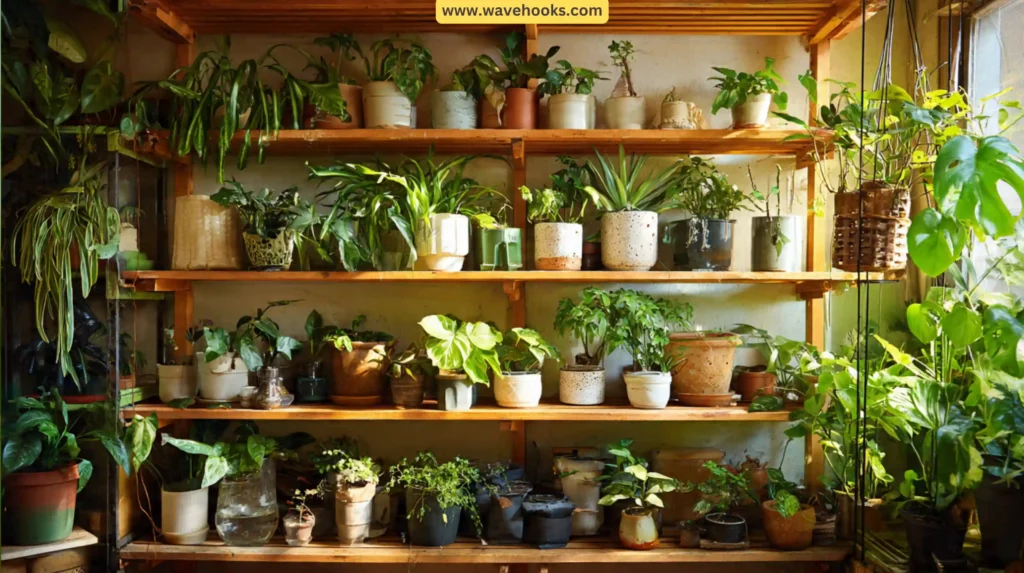
When deciding how to use grow lights for indoor plants, remember that cacti, ferns, and orchids don’t all want the same thing. Divide your plant shelf into zones like high, light, medium, and low. Group plants accordingly. This zoning approach saves power and prevents burnout stress. Think of it as giving every plant its own season under one roof.
7. Keep Temperature Balanced
Grow lights generate warmth, sometimes too much. When learning how to use grow lights for indoor plants, check the ambient temperature frequently. Most houseplants thrive between 65–75°F. Use a small thermometer near your setup. If it gets too hot, increase airflow with a fan. Balanced warmth prevents leaf scorch and encourages steady, lush growth.
Also Check: Do You Need Nutrients After Repotting A Indoor Plants? 10 Facts!
8. Choose LED Over Fluorescent
LEDs aren’t just energy-efficient. They simulate sunlight more accurately. When researching how to use grow lights for indoor plants, go for LEDs rated as full-spectrum. They last over 50,000 hours, run cool, and cut electricity costs by up to 40%. Fluorescents fade and heat up, LEDs deliver consistent, healthy growth even through the darkest months.
9. Avoid Overexposure
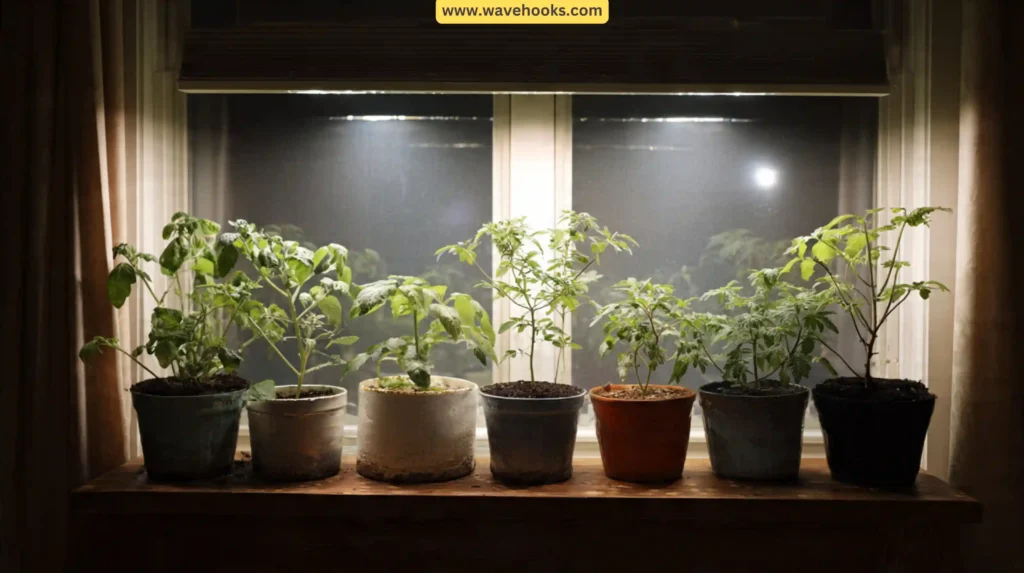
More light isn’t always better. When exploring how to use grow lights for indoor plants, remember that rest time is necessary. Plants need darkness to breathe. Too much light can bleach leaves and stunt development. Follow a 16/8 or 12/12 cycle, light for 16 hours, darkness for 8. Darkness is not neglecting its recovery.
10. Start Small
If you’re new to how to use grow lights for indoor plants, begin with one or two grow bulbs over a small collection. Track changes for a few weeks. Once you understand your plants’ reactions, expand gradually. Starting small saves energy, space, and frustration and lets you adjust lighting before scaling up your indoor jungle.
11. Clean Lights Regularly
Dust dulls light intensity. When applying how to use grow lights for indoor plants, clean bulbs and reflectors monthly using a soft cloth. A layer of dust can block up to 15% of output. Clean lights = brighter, healthier plants. It’s a simple maintenance habit that pays off, especially in winter when light efficiency matters most.
Also Check: 40+ Rare Types Of Snake Plants That Wow Instantly!
12. Combine Natural and Artificial Light
If your plants sit near a window, blend both sources. Mastering how to use grow lights for indoor plants means complementing, not replacing, natural sunlight. Position grow lights at angles to fill dark corners or cloudy-day gaps. This hybrid method saves power while keeping your plants on a natural rhythm that feels more like spring.
13. Adjust Height as Plants Grow
Learning how to use grow lights for indoor plants means staying flexible. As plants grow, raise the lights gradually to keep the right intensity. Use adjustable hangers or pulley systems for precision. If leaves start curling or fading at the edges, your lights may be too close. Treat your setup as a living system, not a static shelf.
14. Pick the Right Duration per Season
Your plants’ needs change seasonally. Use longer durations (16 hours) in winter and shorter (12–14) in spring. This keeps plants synced with natural cues, reducing shock during outdoor transitions. Smart timers make seasonal adjustments effortless, giving your greenery the rhythm it craves.
15. Monitor Plant Behavior
The best indicator for how to use grow lights for indoor plants is your plants themselves. Pale leaves? Too little light. Brown tips? Too much. Slow growth? Adjust spectrum or duration. Observe weekly. Plants communicate through color and shape. The more you notice, the easier it is to tweak lighting perfectly for each season.
16. Use a Light Meter App

Technology can guide you. Download a light meter app to measure brightness. When optimizing how to use grow lights for indoor plants, aim for 10,000–20,000 lux for medium-light species and 30,000+ lux for sun-loving ones. Apps make it simple to check corners or monitor light loss over time, your indoor garden’s new secret weapon.
17. Keep Soil Moisture Balanced
Grow lights warm the air and dry the soil faster. When practicing how to use grow lights for indoor plants, adjust watering schedules. Use moisture meters or finger tests to avoid overwatering. Most plants prefer slightly moist, not soggy, soil. Balanced moisture and consistent light together create year-round vitality, even when outdoor gardens sleep.
18. Use Multi-Tier Racks
If you have limited space, go vertical. Multi-tier racks make how to use grow lights for indoor plants. Install strip LEDs on each level, spacing pots evenly. This setup works beautifully in winter apartments or small homes. It maximizes light reach while turning your corner into a green statement piece, practical and aesthetic combined.
19. Try Smart Grow Systems
Tech-savvy gardeners are redefining how to use grow lights for indoor plants with Wi-Fi-controlled systems. These setups adjust light spectrum, timing, and even humidity automatically. Perfect for busy people or those chasing pro-level results. Some models sync with your phone and even suggest light cycles by plant type, effortless, modern, and efficient.
Also Read: 15 Best Indoor Plants For Asthma And Allergies: Try Now!
20. Simulate Seasons Indoors
The ultimate mastery of how to use grow lights for indoor plants is simulating nature’s calendar. Gradually reduce light hours in the fall, increase in the spring, and tweak color tones. This helps flowering plants bloom naturally and encourages healthier dormancy. By syncing light patterns with seasons, your plants won’t just survive, they’ll act like they’re outdoors.
Overcoming common seasonal challenges when you use grow lights for indoor plants
These are some common seasonal challenges when you use grow lights for indoor plants:
- Short daylight hours: Use a timer to extend light to 10-14 hours.
- Weak winter sun from windows: Place grow lights to supplement and not rely solely on the window.
- Leggy or thin growth: Increase intensity or bring the light closer, also ensure the spectrum includes blue.
- Flowering failures: Switch to a red-rich spectrum or adjust photoperiod to a shorter dark period to trigger blooms.
- High energy use concerns: Use LED grow lights and consider timer usage. Research shows intelligent lighting control can reduce energy costs by 20% in indoor farming systems.
By addressing these proactively, you boost your success when you use grow lights for indoor plants.
Also Check: 15 Indoor Plants That Keep Roaches Away: The Ultimate Fix!
Guide to seasonal routines for using grow lights for indoor plants
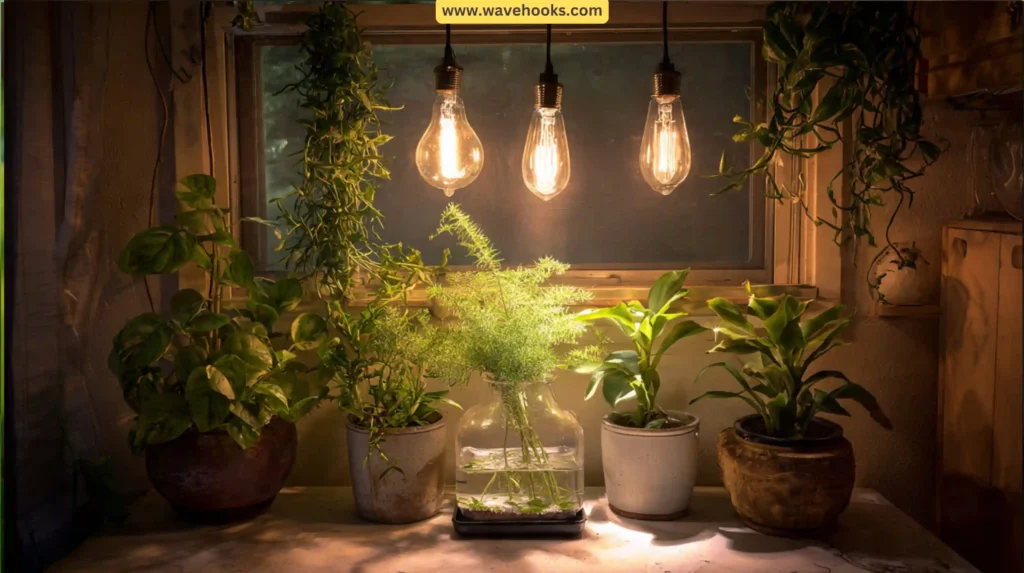
Here is the simple guide to seasonal routines for using grow lights for indoor plants:
Autumn start: Begin with 10 hours a day. Choose a full-spectrum LED at 20-30 cm above foliage.
Mid-winter deep: Ramp to 12-14 hours a day. Increase the red spectrum if you have flowering plants.
Late winter to Spring: Shift to 14-16 hours a day for seedlings or edibles. Gradually reduce artificial lighting as natural light lengthens.
Monitor your plants: Check leaves for signs of distress like yellowing, burning, legginess. Adjust height and duration accordingly.
Timers & automation: Use timers to ensure consistent photoperiods. Plants appreciate routine as much as we do.
Suggested Read: Do House Plants Attract Bugs? The Surprising Truth Revealed!
Real-World Proof shows It Works
NASA’s indoor crop experiments show LED grow lights can produce up to 40% faster growth than sunlight in controlled environments.
Home gardeners who applied consistent 14-hour cycles reported double the leaf density within three months.
Mastering how to use grow lights for indoor plants pays off in lushness, longevity, and confidence.
Conclusion
Once you understand how to use grow lights for indoor plants, you’ll never see gloomy rooms or lifeless leaves again.
Instead, you’ll notice steady growth that turns your home into a living sanctuary. Ready to get started?
Choose one of the 20 ideas above, grab a timer, plug in your first grow light, and bring sunshine back into your space.
Your plants are waiting, and trust me, they’ll glow back with gratitude. Remember, light is life for you and your plants.
Also Check: How To Get Rid Of Gnats In Plants: 15 Must-Try Hacks!
FAQs: how to use grow lights for indoor plants
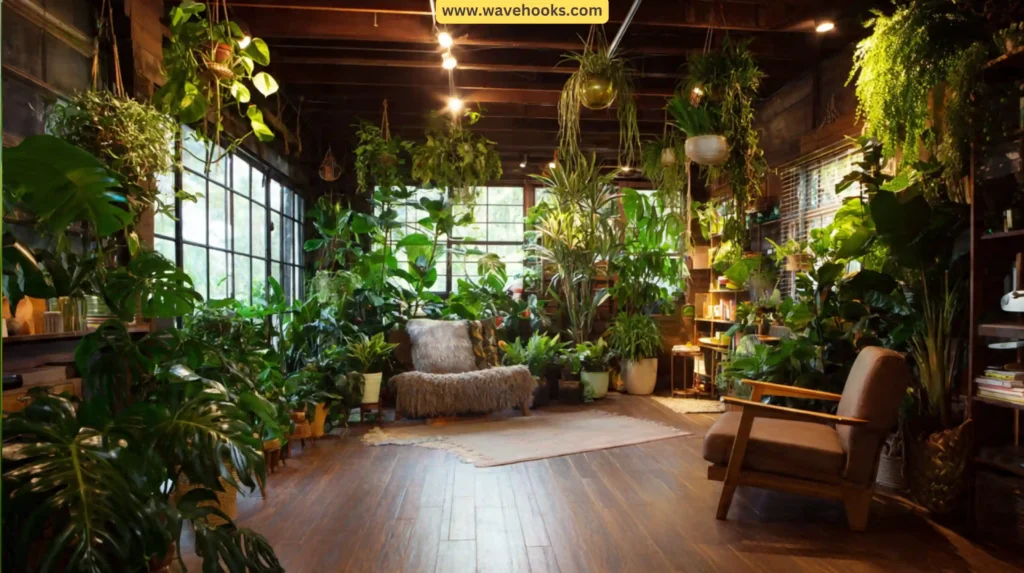
1. How many hours should I run grow lights for indoor plants in winter?
In winter, when natural daylight is weak, aim to use grow lights for indoor plants for about 12 to 14 hours a day. Some low-light foliage plants may only need 8 to 10 hours, but most benefit from 12. Monitor your plants. If leaves stay lush, you’re on track.
2. Can I use regular LED lamps, or must I use grow lights for indoor plants?
Regular LED lamps often lack the spectrum and intensity needed. Experts say you truly should use grow lights for indoor plants, full-spectrum LEDs, or dedicated units for the best results. If you use a regular LED, make sure it is high-intensity and placed very close to foliage.
3. What distance should grow lights be from indoor plants during autumn?
When you use grow lights for indoor plants, place the light about 20-30 cm, 8-12 inches above the top of foliage if you’re using a full-spectrum LED. For weaker lights, you may need to be closer (15 cm), but avoid burning leaves.
4. Will using grow lights for indoor plants boost flowering in winter?
Yes, if your houseplants normally flower, you can encourage blooms by using grow lights for indoor plants with a red-rich spectrum and by managing the photoperiod. For example, 10-12 hours of light with proper darkness can help trigger bud formation mid-season.
5. What spectrum is best when I use grow lights for indoor plants in low-sun apartments?
A full-spectrum light at 5000-6500K simulates daylight and is a safe all-rounder. For low-sun homes, include blue-rich for foliage and red-rich for flowering bands, so when you use grow lights for indoor plants, your greens get the full benefit.
6. Can I leave grow lights on for indoor plants 24 hours a day?
No plants need a dark phase to breathe and complete their growth cycle. When you use grow lights for indoor plants, aim for a light-dark cycle like 12-14 hours light, 10-12 hours dark. Leaving lights on 24/7 can stress plants.
7. Are grow lights for indoor plants energy-intensive during winter?
They can be, but modern LED grow lights are far more efficient than older types. When you use grow lights for indoor plants, choose LED models, use a timer, and only run for needed hours. Studies show smart lighting control can reduce energy consumption by 20% in indoor farms.
Suggested Read: 16 Top Effective Mosquito Repellent Plants Safe For Dogs!




